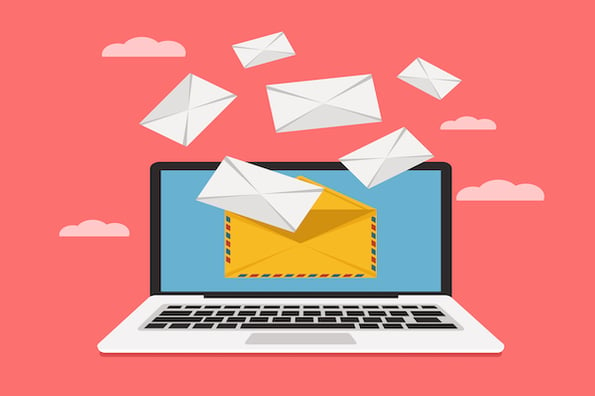5 Benefits of Hyper-Personalization in Email Marketing
As every business sphere evolves, the email marketing realm certainly can’t remain the same. Email marketing is considered one of the oldest forms of marketing, but it still carries weighty value among marketers. However, email marketing isn’t a piece of cake for marketers and business owners.
Several marketers spend considerable time creating email marketing campaigns, and email messages, and using all sorts of persuasive words, only for their emails to be ignored. Not only that, many authentic emails end up in spam folders. But why?
If you’re a marketer or business owner you might consider taking your email marketing practices to a new level with hyper-personalization. McKinsey & Company indicates that 71% of modern shoppers expect some form of personalization from their brands. Moreover, personalization isn’t pleasing to customers only, it can also help a business generate more revenue.
Hyper-personalization can eliminate repetitive tasks and help marketers rely on data to improve experiences. This article explores the different facets of hyper-personalization and its benefits in email marketing.
What is Hyper-Personalization in Email Marketing?
Hyper-personalization refers to the use of technologies to tailor customer interactions to individual expectations. It involves the use of analytics, data, and AI solutions to create custom experiences.
Hyper-personalization in email marketing allows marketers to create more targeted emails that won’t end up in spam folders. To put it simply, hyper-personalization in email marketing bridges the gap between businesses and customers and helps the brand to attain a competitive edge.
Modern customers expect their brands to know their preferences and needs and that can be displayed through personalization. However, personalization isn’t all about beginning an email with a customer name in the subject line or reminding customers of the interactions they previously had with a brand.
Hyper-personalization skyrockets possibilities by allowing brands to tap into customer data and the power of technologies to understand their behaviors. Other hyper-personalization strategies you can consider for your email marketing campaign include email segmentation, building your email list from scratch, and understanding the best time to send emails to increase open rates.
Benefits of Hyper-Personalization in Email Marketing
- Enhances Email Engagement
Engagement in email marketing refers to the degree of attention paid to your emails and the interaction they receive. If your emails have a high engagement rate, it means that they have a good open rate and that they convert. However, low engagement means that your emails are always ignored or dumped in spam folders before being opened.
Hyper-personalization is a meaningful way of engaging customers and prospects. That’s because it enhances email engagement. With the fact that it requires customer data and AI solutions, hyper-personalization sets a definite platform for amazing customer experiences. Your subscribers will always remain enthusiastic about your next email because they are more targeted. This certainly improves email engagement.
2. Improves Conversion Rates
Hyper-personalization allows email marketers to tailor their marketing to customer expectations. With the fact that hyper-personalization involves optimizing individual experiences, it helps email subscribers receive emails that address their needs.
Marketers include a subscriber’s name in the subject line, they target periods when an individual checks his emails, and create content as per the stage of the individual in the customer journey.
They also analyze data to assess customer behavior to tailor email messages.
Tailoring emails in this way increases click-through and conversion rates. Also, readers are more likely to convert hence improving a brand’s marketing KPIs. Consider tracking your email engagement rate to implement changes where necessary to improve conversions.

3. Enhances Customer Retention
Brands use many strategies to build a customer base such as partnering with influencers, SEO, and providing customer support. However, email marketing is a relatively cost-effective way of improving customer retention. Showing that you know your customers makes them feel good.
Moreso, when experiences are tailored to satisfy them at every interaction point, this fosters a deeper bond with the customers. If you’re a marketer who has been doing email personalization for a while, it is essential to consider Hyper-personalization.
It can enhance product recommendations and timely communication which creates more meaningful customer experiences. This will certainly strengthen customer relationships hence widening your customer base.
4. Improves ROI
Email marketing has again and again proven to be an effective form of marketing. It not only keeps customers and brands in touch, but it also fetches incredible returns on investment when done right. Email marketing statistics indicate that a marketer can fetch an average of $36 for every $1 spent. To substantiate, list segmentation and targeted emails drive over 35% of email marketing ROI.
Then what if it is enhanced by technology? Many brands such as Netflix and other streaming platforms fetch considerable ROI with the help of technologies like AI. AI (artificial intelligence) is the biggest driver for personalized product recommendations, triggered emails, or messages that improve sales and conversions.
Whether your email subscriber is new or dealing with an old email list, hyper-personalization practices can help you increase revenue.
5. Improves Marketing Efficiency
Tried and tested email marketing practices like following copywriting tips for text emails, segmenting the email list, and personalizing emails can improve marketing efficiency. However, hyper-personalization can power every aspect of your email marketing strategy.
Hyper-personalization goes beyond segmenting email lists by revealing the differences in customer preferences. This helps to deliver a more individualized experience which enhances marketing efforts.
Bottom Line
Hyper personalization in it involves the use of data, analytics, and AI, among other innovative solutions to create more targeted emails. Hyper personalization can directly impact customer experiences since it helps marketers send more compelling emails. Moreso, it offers a perception to customers that their brands know them better than others. In this way, a brand can foster deeper relationships and attain a competitive advantage in the marketplace.
